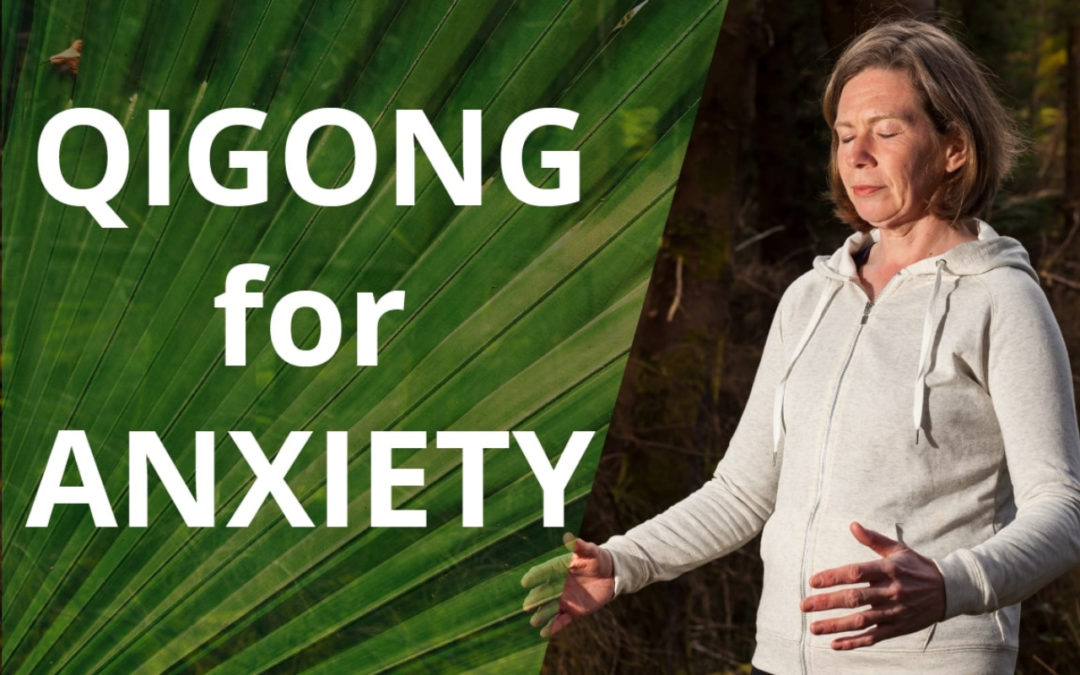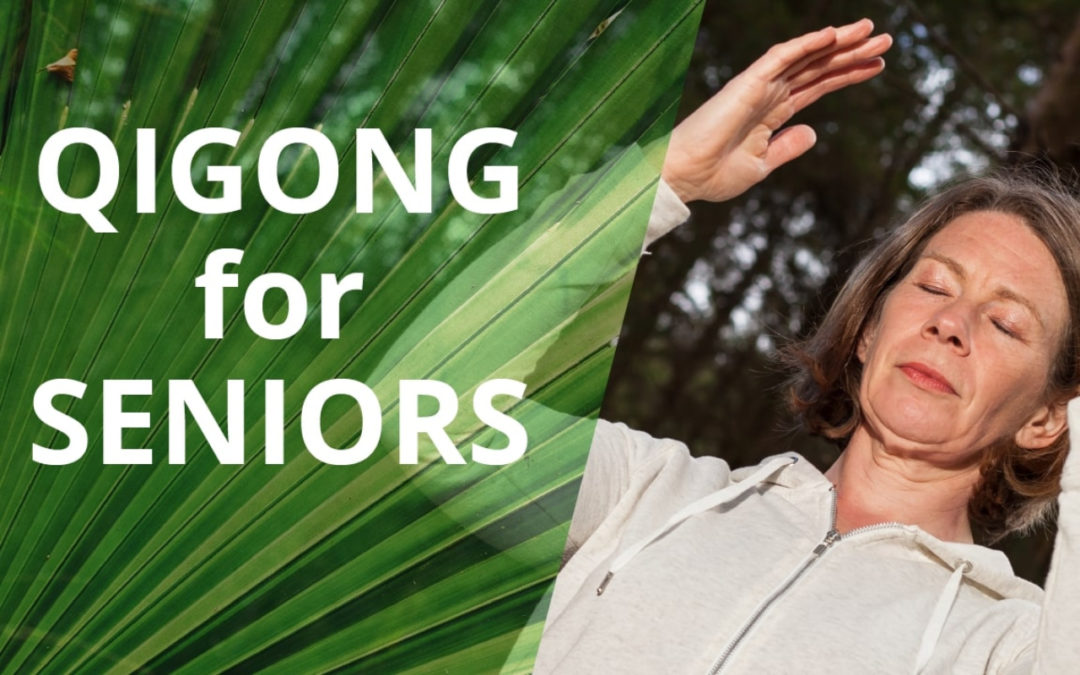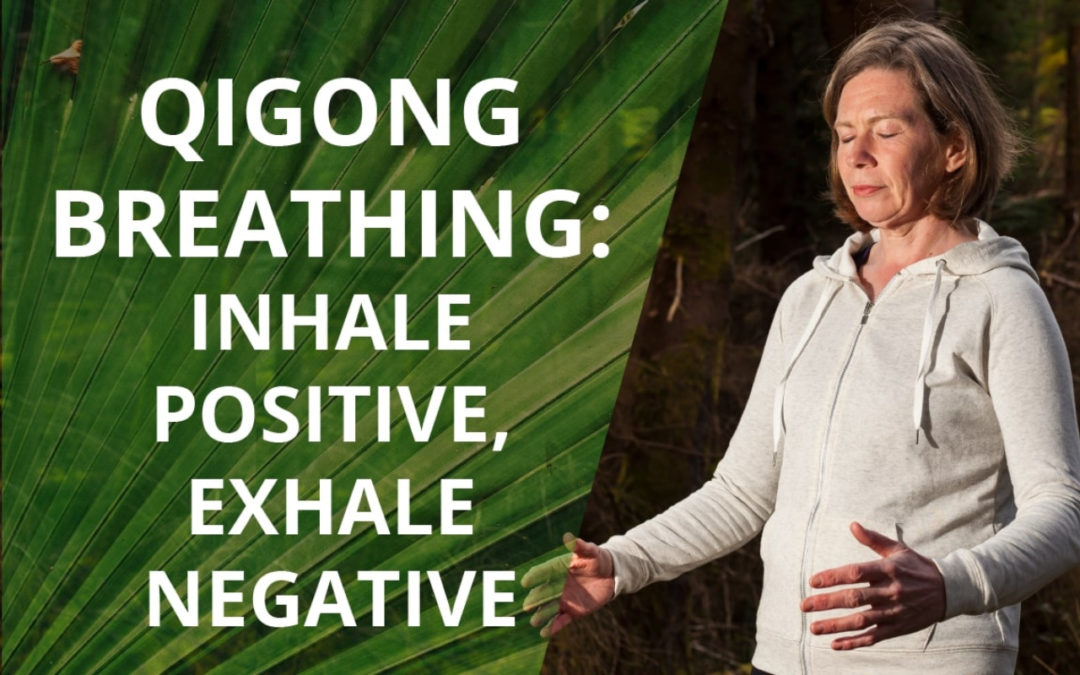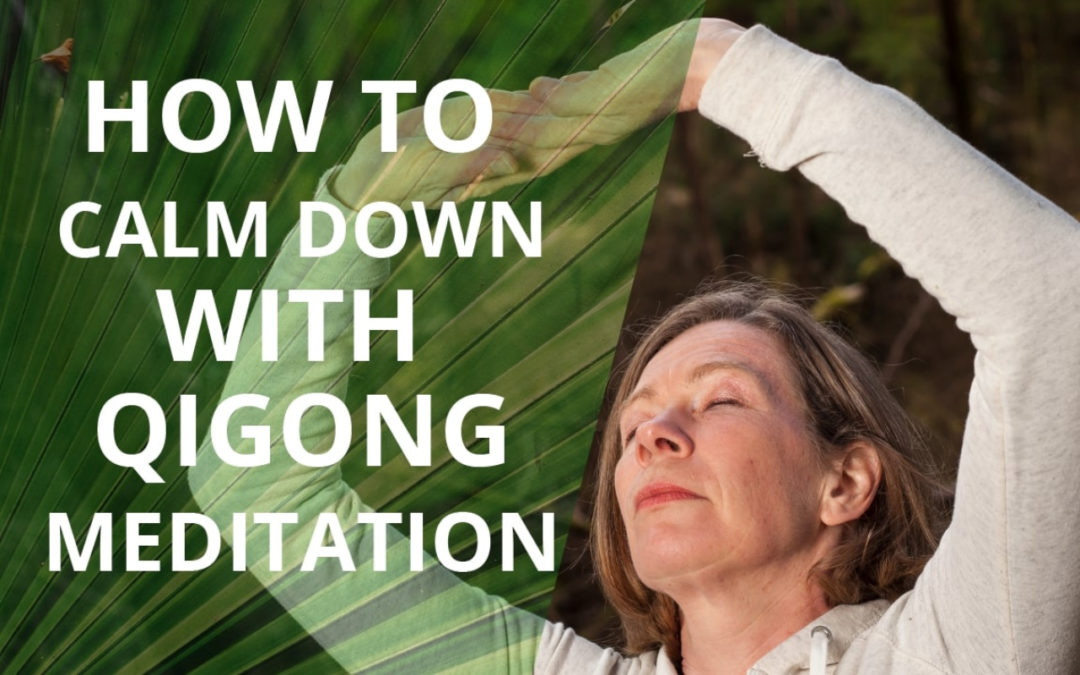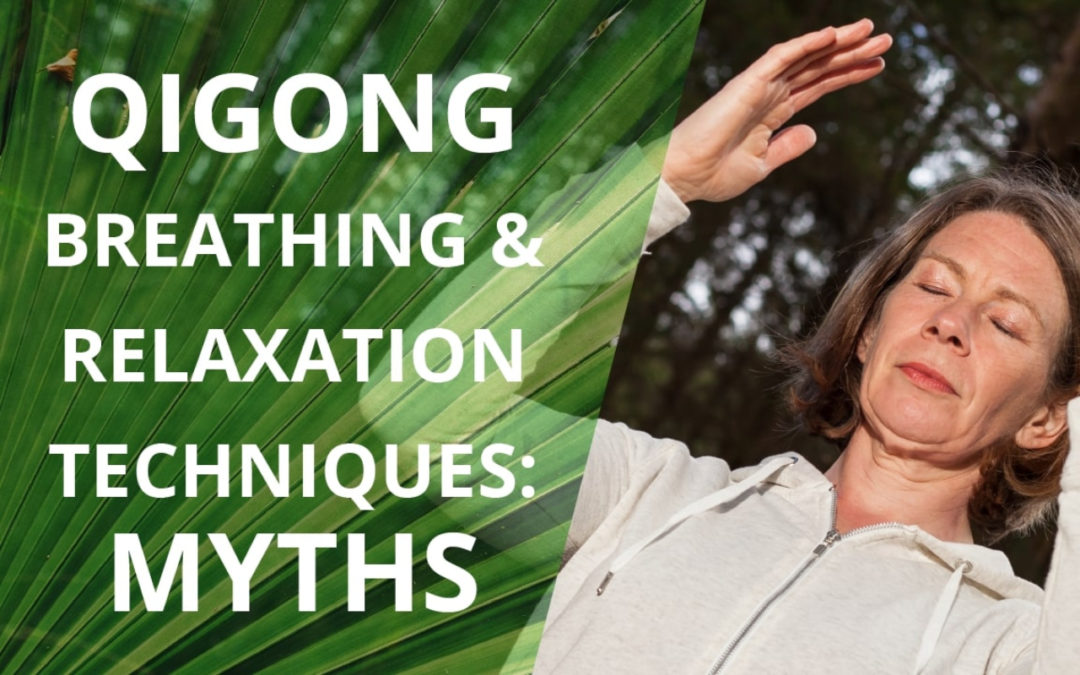
by janicetucker | 24 Aug 2017 | Qigong, Qigong & Emotional Issues, Qigong Routines, Qigong To Help Manage Specific Health Conditions
When we feel anxious that is a sign that we are concerned about something in the future. If it’s a past negative event we are thinking of then the feeling is often one of resentment. In this post I’m going to give you some tips as to how to use Qigong for anxiety reduction. Below you will find my 3 top tips to use Qigong for anxiety.
Janice Tucker is a practitioner of Traditional Chinese Medicine and Medical Qigong, and the founder of the Space To Relax online programme of Qigong video lessons.
Please don’t forget to subscribe to my YouTube channel by clicking the red “Subscribe” button above so you don’t miss my regular videos which are full of useful health enhancing tips. These videos will help you to benefit your health and prevent illness from arising in the first place. Also please give this video a “Like” if you found it informative.
What Is Anxiety?
When we feel anxious we may feel the following sensations:
- Butterflies in the stomach or heart area
- Palpitations or racing heartbeat
- Clammy palms
- Shortness of breath
- Fear
- Withdrawn
- Can’t face people in social situations
Our anxiety will often keep us awake at night and rob us of peace of mind. It may cause us to think negatively about situations. If you experience any of these feelings then the video here will help you to get started on the path to annihilating anxiety.
3 Methods Using Qigong For Anxiety Reduction
1. The “One Breath” Method
Use this method of taking one abdominal breath into the belly and then breathing out. Consciously do this and you will find it very quickly calms your mind and leaves you feeling grounded.
2. Relax, Expand and Nourish The Heart Method
This simple, relaxing Qigong method is available as a free audio meditation on the Space To Relax homepage. Scroll to the bottom of the page to sign up for the audio called “Calm Your Busy Mind in 8 Minutes” and it will be delivered to you by e-mail. This extremely useful method will help you to reduce anxiety. It also promotes peaceful sleep by eliminating stagnant Qi (energy) flow on both a physical and emotional level.
3. Abdominal Breathing
This method is the basis of many Qigong methods. It is available as Lesson 1 in my free 3 part Qigong video lesson series (see below for details). Also you can learn Abdominal Breathing from one of my previous video blogs here. (https://spacetorelax.com/how-to-do-qigong-abdominal-breathing-or-diaphragmatic-breathing/).
What Do I Do Next?
To learn even more Qigong for anxiety reduction go to the Space To Relax homepage. There you can sign up to receive three free video lessons which will be delivered to you by e-mail over the course of a few days. Also, for the free audio meditation “Calm Your Busy Mind In 8 Minutes” scroll to the bottom of the Space To Relax homepage.
Please don’t forget to subscribe to my YouTube channel by clicking the red “Subscribe” button. Then you won’t miss my regular videos which are full of useful health enhancing tips. Also please give this video a “Like” if you learned more about Qigong for anxiety minimisation.
If you are on Facebook head over to my free group, “Space To Relax Free Group” and leave any comments or questions for me there. I’ll be happy to answer them. Also, by joining this group, you will receive regular posts of Qigong articles and videos with really useful tips about how to use Qigong to improve your state of health.
home

by janicetucker | 3 Jul 2017 | Qigong, Qigong Practice Guidelines & General Information, Qigong Routines
Today I’m going to be discussing Qigong for seniors and how it can be used for regulating stress as we get older.
Janice Tucker is a practitioner of Traditional Chinese Medicine and Medical Qigong, and the founder of the Space To Relax online programme of Qigong video lessons.
Please don’t forget to subscribe to my YouTube channel by clicking the red “Subscribe” button. That way you won’t miss my regular videos which are full of useful health enhancing tips. These videos will help you to benefit your health and prevent illness from arising in the first place. Also please give this video a “Like” if you found it informative.
A couple of months ago I received and e-mail from Sally Perkins who is a content manager for a senior advice site called Senior Advisor. She had watched a previous video on my Space To Relax website called “Qigong for Stress Relief” and was interested in how Qigong could help the elderly. She very helpfully suggested that I cover the use of Qigong for seniors and how it can help them with stress relief.
Sally kindly provided me with an introduction to this post, highlighting the importance of regulating our stress levels as we age. The introduction from Sally is below followed by my top 3 tips using Qigong for seniors in order to minimise stress levels.
Sally’s Introduction – Don’t Let Stress Get You Down!
Let’s face it: we are all busy bees. As we get older, it is important to our overall mental and physical health to keep our stress levels in check, or else there are many negative health issues that will arise. There are both short and long term effects of leading a high-stress lifestyle, including:
1. Weakening the immune system
2. Insomnia and sleep issues
3. High blood pressure and high blood sugar levels
4. Skin rashes and acne breakouts
5. Digestive issues
6. Headaches and trouble focusing
By trying to avoid things that bring you stress, whether it be managing your time better at work or trying to steer clear of situations or people who might add to your frustrations, you can better maintain a healthy lifestyle. This guide will show you how to focus on ways to relax and make a true difference in your energy levels which will help you to avoid the negative impact of stress that is increasingly damaging to your health as you age.
Qigong For Seniors – My Top 3 Tips
As Sally rightly points out, if you can avoid stressful situations in the first place that will go a long way towards maintaining a healthy, balanced life. However that is not always possible due to lifestyle, family and work situations. If you do find yourself becoming stressed here are my top three Qigong for seniors tips which you can use to help yourself. This advice applies to senior members of our population and also carers of the elderly as they can also suffer from stress.
1. Breathe Into Your Belly. This Qigong exercise will instantly ground and calm your mind. You can learn how to do this by signing up for my free 3 part video series which I mention at the end of this post. Belly or abdominal breathing is Lesson 1.
2. Relax as soon as possible after experiencing stress to allow your body and mind to recover. After doing this, if you still feel stressed, refer to Lesson 3 in the free video series showing you how to get rid of “waste Qi” or energy/feelings from your body. Also take a look at one of my previous videos on the Space To Relax website called “Qigong for Cleansing“.
3. Develop a Daily Qigong Routine. A daily routine of Qigong or meditation will allow you to better cope with future stressful situations. Bit by bit you will notice that you become better at taking stressful events in your stride.
Qigong For Seniors: What Should I Do Next?
To read more about how to best reduce your stress as you get older go to senior advisor.com and read the following article on “The Many Negative Effects of Stress On Health“.
To learn the Qigong methods I mention above go to the Space To Relax homepage. There you can sign up to receive three free video lessons. They will be delivered to you by e-mail over the course of a few days so check your spam/promotions folder. Also, for a free audio meditation “Calm Your Busy Mind In 8 Minutes” scroll to the bottom of the Space To Relax homepage.
Please don’t forget to subscribe to my YouTube channel by clicking the red “Subscribe” button. Then you won’t miss my regular videos which are full of useful health enhancing tips. Also please give this video a “Like” if you learned much more about how stress affects us as we get older and what to do about it.
If you are on Facebook head over to my free group, “Space To Relax Free Group” . You can leave any comments or questions for me there. I’ll be happy to answer them. Also, by joining this group, you will receive regular posts of Qigong articles and videos with really useful Qigong tips.
If you’d like some tips on how to make changes to your home in order to continue to move around with confidence then read this guide on “Aging in Place“.
home

by janicetucker | 15 Apr 2016 | Qigong, Qigong & Emotional Issues, Qigong Meditations & Breathing, Qigong Routines
In this blog I’m going to explain how, in Qigong, you can use your breath and your mind together to inhale really good stuff and exhale really bad stuff that we don’t need in our bodies or in our minds. The essence of Qigong is to use your breath and your mind together. You can therefore “get rid of the negative” with Qigong breathing exercises.
My name is Janice Tucker. I’m a Chinese Medicine and Medical Qigong practitioner. I’m also the founder of the online programme, Space To Relax, where you can learn Qigong lessons in order to better manage your health.
Think about this quote from Thich Nhat Hanh, the famous Vietnamese Buddhist monk:
Breathing in, I calm my body and mind
Breathing out, I smile
Dwelling in the present moment
The only moment.
What this means, from a Qigong perspective, is that, as you breathe in be calm and clear. As you breathe out, relax and smile. The only thing you are doing during this breathing is concentrating on your breath and observing where you are in the present moment. This is something that no many of us do on a regular basis.
Another, more humorous, quote to consider is:
Breathe in the good shit
Breathe out the bullshit!
This is not quite such a serene way of thinking about things as the first quote but it certainly gets to the point.
To summarise, when you are breathing in, think of breathing in good, clean, fresh energising air (Qi). As you breathe out, think of getting rid of anything you don’t want. This could be an ache, pain or other physical feeling. It could also be something more emotional or mental in origin, for example, anger, frustration, sadness, grief, fear, anxiety.
You can use your breathing to help dispel anything negative from your body or mind. Very importantly, visualise the negative thing actually leaving your body, leaving your nostrils as you breathe out. You can imagine the negative thing floating away from you and up into the sky so that it moves well away from you.
Simple Qigong breathing exercises like this can make a massive difference to your day to day life. All you have to do is stop for less than a minute, practice these exercises and be mindful of your breath. Breathe in the good stuff and breathing out the bad stuff while staying in the present moment. During the course of the day this can make very fine, positive adjustments to how you feel as your day goes by.
If you would like to learn more Qigong breathing exercises and meditation techniques then head over to the Space To Relax homepage. There you can download a free Qigong meditation which will calm your mind in 8 minutes. You can also sign up for a free 3-part Qigong video series where you will learn more about the Qigong breathing exercises and a couple of other great methods to help get rid the negative stuff from your mind and body.
For more videos like this you can subscribe to my YouTube channel here (and please also give this video a “like”).
I’d love to hear from you so why not head over to Facebook and join my Space To Relax Free Group. Leave a comment there to let me know how you got on and tell me what you do to get rid of negative feelings in your mind or body during the course of the day.

by janicetucker | 1 Apr 2016 | Qigong, Qigong & Emotional Issues, Qigong Meditations & Breathing, Qigong Practice Guidelines & General Information, Qigong Routines
Have you ever wondered why everything is going on in your head and you can’t seem to calm down to feel a bit more grounded? Today I’m going to explain exactly how to calm down with Qigong and bring down the “Excited Point” in your brain!
My name is Janice Tucker and I’m a practitioner of Traditional Chinese Medicine and Medical Qigong and the founder of the Space To Relax online Qigong programme of Qigong lessons where you can learn how to supercharge your health.
The problem is that when we have everything going on up in our heads we feel very easily overwhelmed and we often feel anxious. There are too many things going on and it’s very difficult to think clearly with focus and clarity.
In Qigong we can bring all of these feelings and thoughts down from what we call the “Excited Point” in the brain. We bring them down to what is called the “Dan Tian” area which is in the lower abdomen. Dan Tian is the seat and reserve of your energy. When you can bring your Qi down into Dan Tian you will feel much calmer, less anxious and less overwhelmed.
The following simple exercise will show you how to calm down with Qigong. Close your eyes and place one hand flat on your lower abdomen, below your belly button. As you breathe in feel your abdomen expand so it pushes your hand outwards. As you breathe out feel the abdomen shrink and become smaller. (This exercise is in a previous blog here).
As you are breathing observe where your excitement and all your thoughts are. Where is all the energy in your body? Does it feel like it’s in Dan Tian and the lower abdomen or does it feel like you are “up in your head” with lots of thoughts whirring around?
As you breathe out think of breathing out from your head down to Dan Tian and into your feet. As you breathe in, inhale good Qi and energy from the outside environment and then again, breathe out, bringing busy thoughts down from the Excited Point in the brain to Dan Tian in the lower abdomen and into the feet. Repeat this for as many breaths as it takes you to begin to feel more calm and grounded.
You will notice that very quickly, in just a few breaths, that you can calm your mind so that you have a little bit of breathing space to then easily go about the rest of your day. If you can do this very quick exercise on a regular basis, whenever you remember, this can be a very helpful way to quickly get you back on track to help you be clear and calm again.
Now you know how to calm down with Qigong and also very quickly refocus and relax.
If you want to experience more relaxing effects of Qigong exercises then head to my Space To Relax homepage where you can download a free “Calm Your Busy Mind in 8 Minutes” audio meditation. Also, you can sign up for a free “Space To Relax Qigong Video Series” (you can get this by popping your details in the green box at the top right of this page), practice Qigong for 5 minutes and find out how quickly you can transform yourself from feeling stressed to chilled out!
Click here to subscribe to my YouTube channel if you want to be sure not to miss out on any future videos.
I’d love to hear what you thought of this simple exercise so please leave me a comment below. 🙂

by janicetucker | 25 Mar 2016 | Qigong, Qigong & Emotional Issues, Qigong Meditations & Breathing, Qigong Practice Guidelines & General Information
Today I want to let you know about the huge misconception that’s out there about Qigong breathing, relaxation and meditation exercises. There is the idea that if you are going to do relaxation exercises then you need to put a certain amount of time aside every day to do this. Because of this, many people find breathing and relaxation exercises very difficult to implement. They have the idea that they would like to do some form of relaxation exercise but never seem to get around to doing it. They just don’t have time.
From my point of view, this is a huge misconception. As I teach Medical Qigong online through my Space To Relax programme and in face to face workshops, the main focus of that teaching is to show my students how to integrate Qigong breathing and relaxation exercises into their day. I know myself that if I have to put aside and allotted time every single day for practice then it is very hard to keep to that….but….I also know that if I’m able to integrate Qigong exercises into my day then I can do it so easily – it just happens!
Qigong exercises can be done when you are walking, standing in a queue at the post office or in the supermarket, in bed at night just before going to sleep (using some of the Qigong breathing and meditation exercises). It’s very easy to integrate Qigong breathing and meditation exercises into your day.
So, if you have found in the past that you have been discouraged from practising any kind of relaxation exercise because of the time factor and having to make a slot available in your day then be discouraged no longer!
The benefits of Qigong breathing and relaxation are huge and numerous. They will help you to relax, relieve your stress and overwhelm. Many will help you to sleep peacefully at night or give you much more energy so that you can achieve much more in your day than you thought possible, taking it all in your stride.
I would encourage you to try some Qigong exercises so if you are thinking, “Yes, I can do this, this will be workable for me” then head over to www.spacetorelax.com and on the homepage you will see you can download a free Qigong meditation called “Calm Your Busy Mind in 8 Minutes”. Once downloaded you can listen to it on your laptop or phone whenever you have a tiny bit of relaxation time while sitting enjoying a cup of tea or just before going to sleep at night. This method is so easy to integrate into your day as it takes so little time.
I’d love to know what you think of the meditation so please leave a comment below or head over to my free group on Facebook: Space To Relax Free Group and ask to join so you can then leave a comment there.
